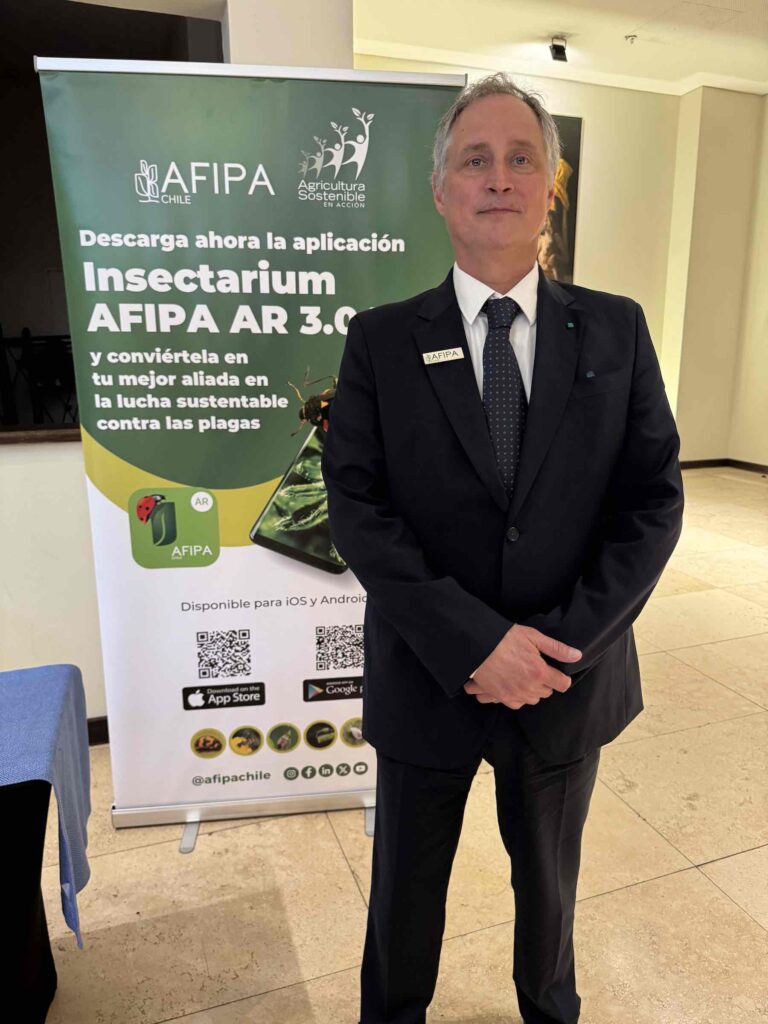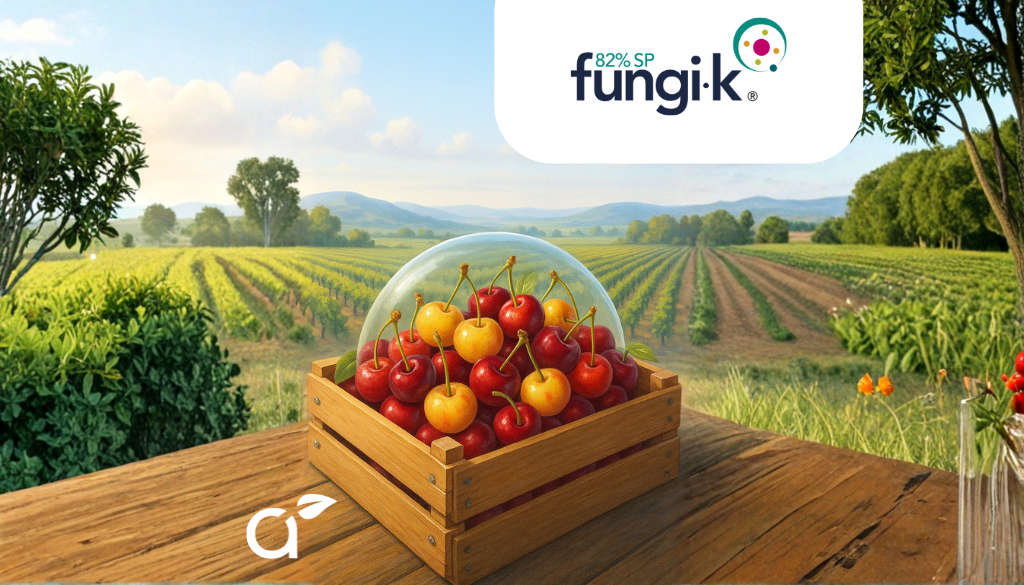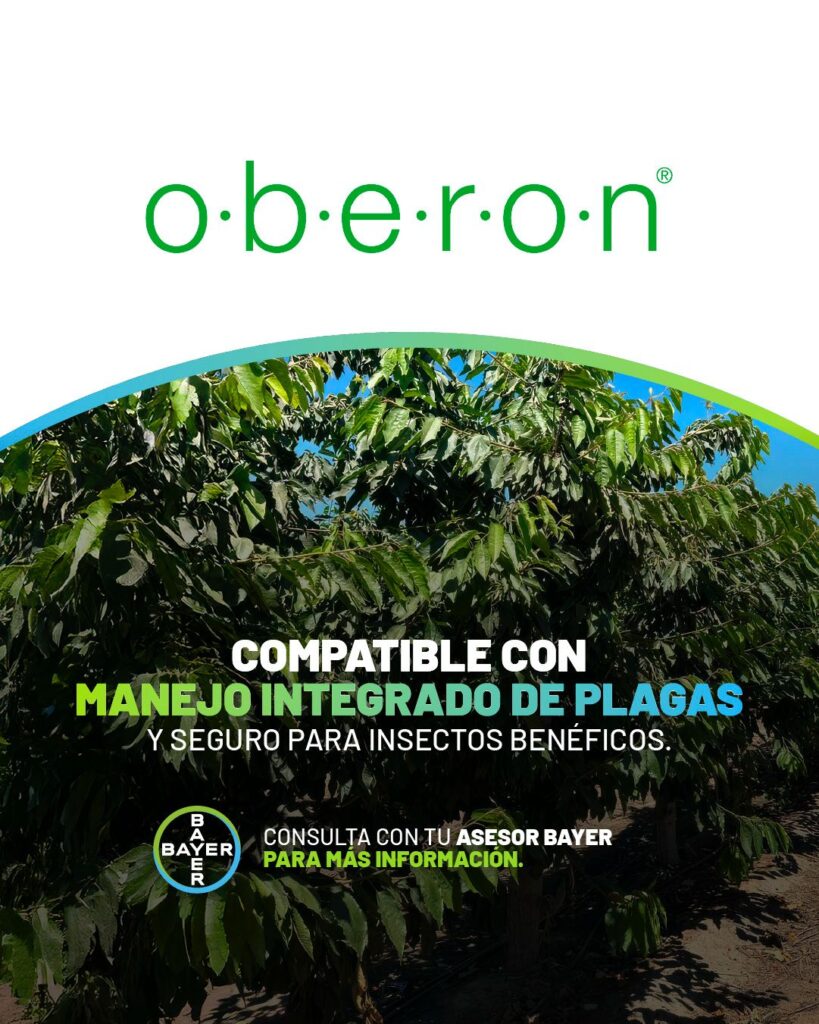As part of our special issue on “climate change,” we spoke with cherry producers and production consultants to find out what the current situation is in the orchards, the main concerns of the industry, and what should be done in the face of a spring that promises more rainfall than usual.
During the 2022-23 season, cherry producers' main concern was planning a series of agronomic management measures in order to advance flowering and harvesting, in view of an early Chinese New Year (CNY); the Chinese holiday that marks a before and after in the Chilean cherry campaign was celebrated on January 22, generating one of the narrowest commercial windows in the history of this fruit species. All efforts were aimed at being able to reach their destination on time.

The 2023-24 season, on the other hand, does not have such concerns, as the CNY will be celebrated on February 10; however, the industry's attention is focused on spring, which officially begins on September 23 and is accompanied by the "El Niño" phenomenon, predicting instability, high temperatures and rainfall.
«Today the main concern is how the flowering, fertilization and setting processes will go in order to achieve the kilos we have projected and, at the same time, how the nutritional programs will be implemented if we do not have the need to irrigate from now until the next 30 days, often because we have oversaturated soils due to the rains and because it will continue to rain; there are hydraulic works that are still not ready after the floods and we must define what strategies to follow in terms of soil nutrition and foliar nutrition,» said Carlos Tapia, specialist advisor in cherry production and Technical Director of Avium.
The garden today
Week 38 and in the central area, recently affected by flooding, it is possible to see some scenarios that add to the concerns that spring brings with it: damaged irrigation systems, land that cannot be accessed by a tractor, soils oversaturated with water and the need to implement nutrition and foliar programs each season.

«I think that today we have some damages in the irrigation systems that are not yet dimensioned, probably when they start to be used there will be more failures than we think; on the other hand, the high amounts of precipitation, every week, every ten days we are having 50-60 mm or more, depending on the orchards, this very humid spring condition will also force us to use phytosanitary programs in terms of being much more demanding and in operational terms some orchards do not have a floor to enter with machinery, so we cannot privilege the foliar program vs. the soil or fertigation program.», warned Valeria Lepe, a specialist advisor in fruit species nutrition.
As for phenology, there are also certain data that draw attention and are related to the famous "El Niño" phenomenon, the headache of this season.
«Today, in some early areas of the O'Higgins region, we have noticed that flowering is a little earlier than we should be seeing, mainly in the Lapins variety. We recognise that Lapins is one of the varieties that requires less cold to meet its winter needs, but we have also detected that it requires less thermal accumulation in spring. If we measure the thermal accumulation in degree days based on 4.5ºC, which is the correct scale to measure dormancy exit, regardless of the area, in the central area we are seeing that we have 20-25 % more temperature based on degree day accumulation and that has definitely triggered flowering a little earlier than expected in Lapins. We have to understand this and see what actions we have so that these very early flowerings do not end with low production, either due to excessive tree development or early blooms. This is news in development, we have to understand it, but we also have to generate strategies to be able to weigh it up.», reflected Carlos Tapia.
Cherry producers know that this will not be an easy season; dormancy has already had its first obstacles expressed in a low accumulation of cold hours compared to previous years, in addition to the floods that affected a significant part of the orchards in the O'Higgins and Maule regions.
"Today, especially in the early areas, where in some cases we had flooding events, we see an excess of moisture in the soil, where we are not clear how or when we are going to start irrigating," said Sebastian Rojas, Agricultural Manager of Agrícola San Clemente.
Added to this are the difficulties in implementing nutritional programmes and rainfall forecasts for the coming months.
«From the forecasts I have seen, what scares me the most is the spring rains, more than what might happen now that things are already a bit risky. We will see what happens with the curds, but if we get some rain later, that will be the biggest loss, economically speaking, so I am very worried about the rains that might come later.», said Mario Soza, GeoAgro Agricultural Manager.
How to prepare?
The National Oceanic and Atmospheric Administration (NOAA) announced that the phenomenon of "El Niño" would directly influence the development of spring in our country, pushing temperatures and precipitation. In turn, the Meteorological Directorate of Chile (DMC), handed over his forecast for the next three months , which announces more rainfall than usual.
This is a rather complex event for cherry production; episodes of rain close to ripening, accompanied by high temperatures, cause an increase in the internal pressure of the fruit, which can lead to microfractures, subsequent splitting and even rotting.

This time the winds are not blowing in favour of cherry producers; the weather created a complex scenario just before the end of dormancy and complicated it again when the initial phenological states were already visible; as if that were not enough, spring promises above-normal rainfall for the season, so the question seems obvious: How to deal with all this?
«It will be a very difficult season to manage in some aspects, I think we have to prioritize some things, some definitely will not be able to be done in the case of the fertilization part; there are probably principles or plans that we had that will not be able to be implemented, because if there is no need for irrigation there are certain nutrients that are not worth applying because they will be inefficient in terms of use in the plant, I think we have to change the course of some things, although we always have a plan that we want to do, but today the conditions are facing us with a controversial issue and we have to make some decisions", recommends Valeria Lepe.

Macronutrients delivered to plants are normally administered via irrigation, however, since there is no need to start the irrigation season yet due to soil saturation, carrying out these applications at this time could be totally inefficient.
«Since the plant does not need irrigation, it would consume little of what is applied, so we have to change there, it depends on where we are located, the varieties we have, favoring some nutrients, probably low doses of nitrogen, because we are going to run out of time and then we have to move on to potassium programs and at the beginning I think we have to favor calcium programs, whatever we can do at the soil level.", Lepe added.
The impossibility of carrying out nutritional programs, of course, can have an impact on the quality of the fruit, since the nutrients are very expressive; however, an orchard in which good post-harvest work has been done and which has a "stock" will be better positioned than those that come with a weak post-harvest. This once again reminds us of the fundamental importance of carrying out all agronomic management, since these are not only beneficial at the time they are carried out, but are also an insurance to face complex seasons such as 2023-24.
«There is a condition of colder soils, more saturated soils and, probably, this condition will extend for several weeks until the soil recovers its ideal condition; this will have an impact on the physiology of the plants, since every year, not before October 5-10, the soils have temperatures of 13-14 ºC, which allows the roots to support all the phenological processes; today we will clearly have to depend on foliar nutritional programs, since the irrigation season will not be able to start early in the season. We will have to give priority to calcium programs via soil, which undoubtedly has to be prioritized with respect to other nutrients.", concluded Carlos Tapia, specialist advisor in cherry production and Technical Director of Avium.








